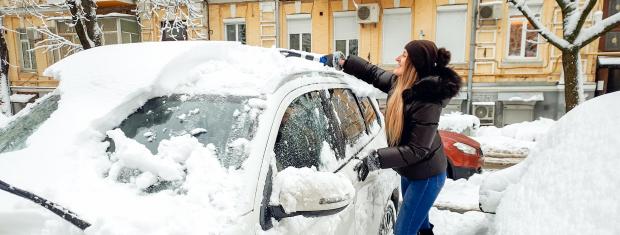
10 Winter Driving Myths
Sometimes the danger of winter driving isn’t due to the weather – it’s due to other drivers. It’s not always their fault, though – some drivers might believe the myths surrounding driving safely in inclement weather. We’ll uncover 10 of those myths along with why you definitely should not believe them.
1. My engine needs a few minutes to warm up when it’s cold
The largest myth of all – your vehicle does not need to sit idle for more than a minute in cold temperatures. In fact, leaving your car in idle for too long can potentially damage your engine. Most modern vehicles are okay to drive approximately 15-30 seconds after ignition.
2. Winter tires are a waste of money
FALSE – winter tires are one of the greatest ways you can improve the safety of your vehicle in winter driving conditions. Sure, all-season tires can be used year round, but that doesn’t make them the best option. Winter tires give you additional traction and are made to withstand sub-zero temperatures.
3. My gas won’t freeze

Sorry man, yes it will! If you leave your gas tank extremely low overnight, chances are your car won’t start in the morning. Your 30 minute commute can easily turn into a couple of hours in a winter storm, and becoming stranded due to low fuel is more than an inconvenience – it can become a very dangerous situation. Try to make it a habit to keep your tank at least a quarter full when temperatures start to drop.
4. As long as I can see out of my windshield I’m good to go
No, no, no. You’re turning two blind spots into 100’s! Clearing a small spot to see through on your windshield is not safe, for you or anyone else on the road. All glass should be cleared of snow and ice. Snow should be cleared from your hood, roof, and trunk. Loose snow will blow up onto your windows you just cleaned and/or affect drivers visibility behind you.
5. Rural drivers are the only ones who need Emergency Kits
The reality is anyone can become stranded anywhere – whether that’s a mile from home or in the middle of nowhere. Tow trucks are busy during inclement weather, so it could be hours before one gets to you. This is one of those circumstances where you’re better safe than sorry.
At a minimum, your winter survival kit should include blankets/gloves/hats, an ice scraper, a folding/collapsible snow shovel, a bag of sand or kitty litter, hand warmers, winter boots and a sleeping bag. Click here for a full guide to building a winter car survival kit.
6. The roads are salted and plowed, I can drive normally

You can never really drive normally in the winter. Salt doesn’t actually melt ice, it works its magic by lowering the freezing point of water, so it stays fluid at lower temperatures. Salt breaks the bond between the ice and the asphalt, making it easier for plows to clear the road.
Anytime you are driving in winter weather, you should always slow down, accelerate/decelerate slowly, and leave extra space between your vehicle and other drivers.
7. There’s nothing I can do about black ice
But there is - you can anticipate it. Black ice is a thin ice film that looks black because you are seeing the asphalt through it. It commonly forms when the temperature is at or just above 0°C, and water freezes on the cold pavement.
Look far ahead, and be extra mindful on bridges which can be colder than roads. Also look for asphalt that’s in a shadow, such as from trees or buildings; and areas where the sun is melting snow on the side of the road but the air is cold. Look for sections of asphalt that look different, perhaps a darker or glossy appearance.
If you’re on black ice, don’t hit the brakes; instead, gradually let off the throttle, and steer as little as possible. If you avoid sudden changes in speed or direction, you may be able to get safely across it and onto bare asphalt again.
8. My anti-lock brakes will bring my vehicle to a complete stop
Your anti-lock brakes are turning on because your car is struggling to stop. Acceleration/deceleration should be gradual in winter weather. While your anti-locks can certainly aid you from sliding into the middle of an intersection, you should never rely on them to bring you to a complete stop.
9. With all-wheel drive I can drive normally

Nada, think again. All-wheel drive is a fantastic safety feature for winter driving, but it does not make you invincible. In sleet and ice, for example, your tires will have nothing to grip. It’s about how you drive, not what you drive. Don’t let your all-wheel driving habits put you and others in danger.
10. Regularly washing your car in winter isn’t worth it
SALT AND METAL ARE NOT FRIENDS. Road salt is one of the worst things for your vehicle. If anything, you should wash your car more frequently in the winter. Experts recommend washing your car at least once every couple of weeks to prevent white salt stains and rust from forming.
Myths are myths for a reason, some are easier to detect than others – but they all hold false promises; Don’t leave the fate of your life and your vehicle to a myth, leave it to us!


